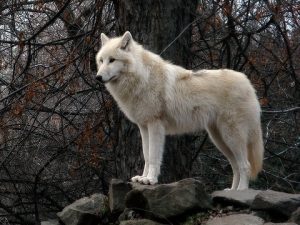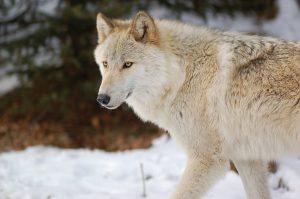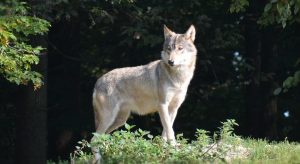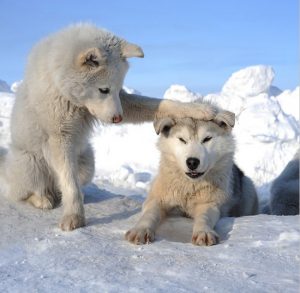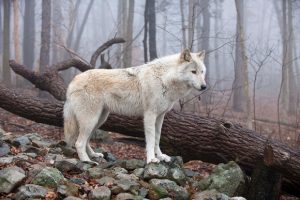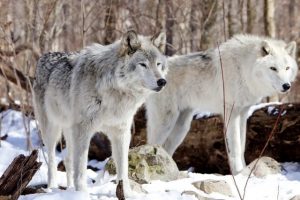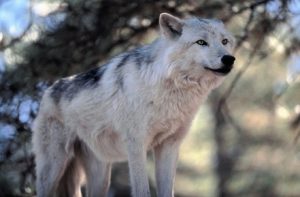Tundra Wolf
Tundra wolf is one of the largest among the subspecies of gray wolves occurring in Eurasia from Finland to Kamchatka Peninsula. Although the carnivorous subspecies is under threat, it is still hunted for its fur.
Scientific Classification
| Kingdom | Animalia |
| Phylum | Chordata |
| Class | Mammalia |
| Order | Carnivora |
| Family | Canidae |
| Genus | Canis |
| Species | Canis lupus |
| Scientific Name | Canis lupus albus |
Quick Information
| Other Names | Turukhan Wolf |
| Size | Male:118–137 cm Female:112–136 cm |
| Weight | Male:40–49 kg Female:36.6–41 kg |
| Color | Reddish-gray upper fur with lead-gray lower fur |
| Physical Characteristics | High body, long legs, broad skull with a narrow muzzle, bushy tail, coat comprises of thick, dense underfur |
| Distribution | Northern arctic and boreal regions of Russia |
| Habitat | Eurasia’s tundra and forest-tundra regions |
| Diet | Deer, moose, caribou, wapiti, musk ox, bison, mountain sheep |
| Vocalizations/Sounds | Three types of howl: Growl: To send a message of warning to other wolves Bark: Warn the pack of danger Whine: Used by females to call her young for nursing |
| Adaptations | Thick fur protects them from biting cold weather, large paws with sharp claws enable them to move easily on snow and ice, extremely keen senses aid in effective hunting |
| Lifespan | About 16 years |
| Breeding Season | End of March to April |
| Gestation Period | 63 days |
| Litter Size | 2 to 6 pups |
| IUCN Conservation Status | Least Concern |
Behavior
They live in packs of up to 20 animals and are socially organized. At the helm of the social order are one dominant male and female.The species hunts cooperatively to succeed in killing preys much larger in size than an individual member. They remain confined in one place during the spring and summer as they take care of their pups. During the fall and winter, they travel at night sometimes covering more than hundred miles.Tundra Wolf has great stamina which immensely helps the animal in hunting.
Mating and Reproduction
The alpha male and alpha female are the only two members allowed to mate in a pack. They are lifelong mating-partners and if one of them dies or is injured, the member next in the hierarchy takes over.
Life-cycle
All the members of the pack take part in nursing the pups. The pups are taken care of up to six months, and they stay with the pack for another two years after which they form their own packs.
Interesting Facts
- According to the International Wolf Center, the tundra wolf possesses a territory covering more than 1000 square miles. This is mainly due to scarcity of prey.
- The subspecies was totally eliminated from a number of the Arctic Islands north of Siberia, but it has been recently spotted in the Wrangel Island. In Russia and in some former Soviet States, wolf hunting is allowed without a permit yet the animal has been classified as “Least Concern”.
- An adult tundra wolf can consume around nine kilograms of meat in one feeding.
Published on December 26th 2016 by Sajal Datta under Coniferous Forest Animals.
Article was last reviewed on 9th May 2023.


